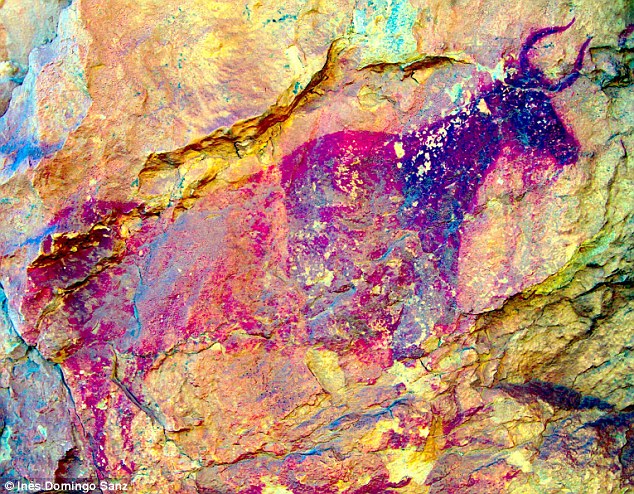
* They include drawings of two aurochs, two human archers and a goat
* A layer of dust protected 10 figures, which were exposed to the weather
* Computer analysis has revealed unseen details
Amazingly well-preserved cave paintings dating back seven millenia have been discovered in Spain.
The stunning murals provide a rare glimpse into daily prehistoric life - showing dramatic hunting scenes including human archers.
Despite being exposed to harsh weather, the 'totally unique' artwork has survived on a 19ft (6 metre) long wall inside a small cave in Vilafranca in Castellón, in the east of the country.
The exact location of the cave is being kept a secret until the paintings can be properly protected and preserved, The Art Newspaper reported.
Archaeologists discovered the ancient paintings, which include drawings of two aurochs - ancestors of modern cattle - two human archers and a goat.
A layer of dust protected 12 figures, which were exposed to the weather, but luckily the pigmentation of the paintings has not suffered as a result.
Computer analysis has made it possible to identify aspects of the paintings that had not been easily visible behind the dust.
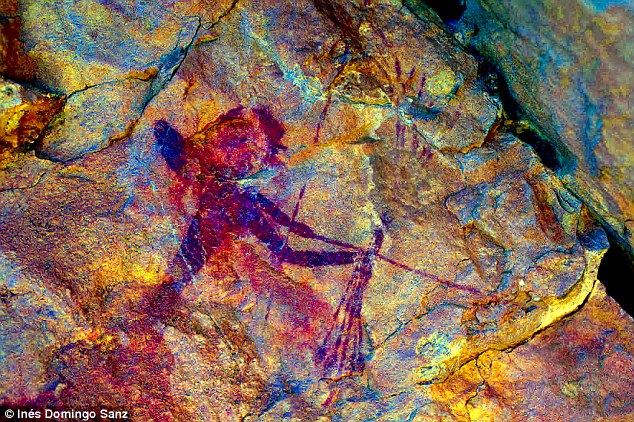
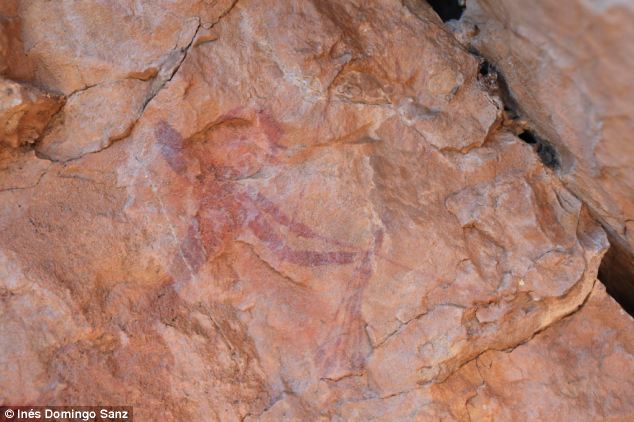
Researchers from the University of Barcelona, the University of Toulouse II Le Mirail and the University of Valencia came across the site while they were examining another area in the region.
Inés Domingo Sanz, a research professor at the University of Barcelona said: 'Some of the [painting] details are unique [and unlike anything] across the entire Mediterranean Basin'.
'Hunting scenes are common in Levantine rock art...they are mostly focused on deer, goat or wild board hunting, but bull hunting is far less common,' she told MailOnline.
'When depicted, they usually [show] linear archers - very schematic figures - later in the sequence. However, in this new site, the archer they are related with is also naturalistic.'
Dr Domingo Sanze explained that Levantine rock art - the group of over 700 sites of prehistoric rock art of the Iberian Mediterranean Basin - was included in the World Heritage list by Unesco in 1998, so the historic, cultural and artistic value of this rock art tradition has already a universal recognition.
'Isolated bulls are more common in Levantine art, while in this scene we have at least 4 bulls sharing the scene,' she said.
'There are other examples, such as the Prado del Navazo or La Vacada in Teruel, but considering that there are more than 700 sites with Levantine art known so far, this scene can be considered unique.'
Dr Domingo Sanz explained that the action and some of the features of the archer has not been seen before, as well as one of the animals painted, but that the findings will be revealed in a forthcoming research paper. The condition of the paintings is also excellent.
'Although new discoveries have taken place in the last few years, they usually include a very few and damaged motifs. But in this site we have a minimum of 12 quite well preserved motifs , including several animal species and most of them are quite large - the average size of the bulls is 30cm, and the humans 16 cm.'
The uncovered site means that links could be established between the paintings in the area of Valltorta-Gasulla in Castellon with those situated in Bajo Aragón, as Vilafranca lies between them.
'This finding fills a gap and help us to start reconstructing potential communication routes between these two main rock art regions. These links are also supported by the stylistic similarities of some of the motifs at these new site with other motifs recorded in these two major regions,' she said.
The Valltorta-Gasulla caves are filled with images of archers and large animals, such as an enormous primitive bull, and are considered to be some of the most important examples of open air cave paintings in the world.
Some caves show examples of agriculture and hunting scenes, such as a single male attacking a group of deer with a bow and arrow, hinting at a technique used by the primitive inhabitants of the caves.
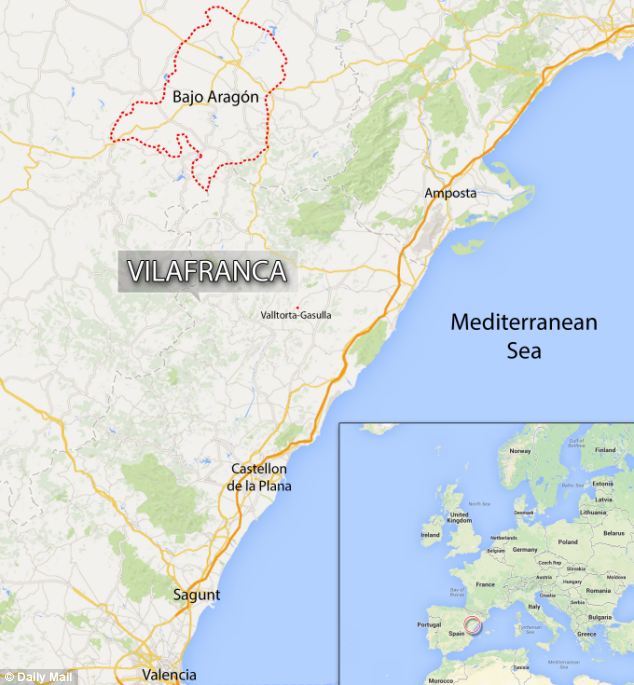
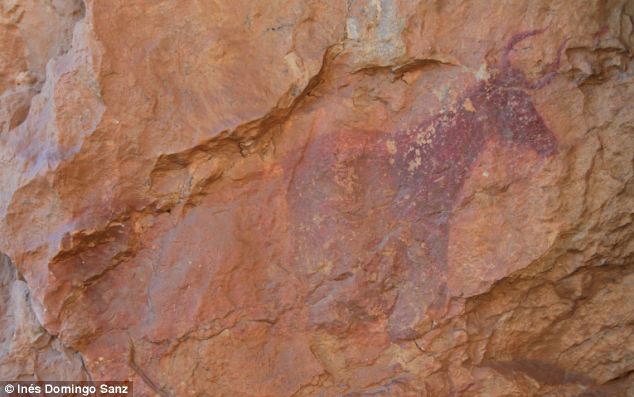
PREHISTORIC ARCHERYSource: The Art Newspaper
The newly discovered paintings in the cave appear to show a human using a bow and arrow.
The primitive weapon is known to have been invented by the end of the Upper Palaeolithic.
Bows eventually replaced spear-throwers as the predominant way of catching food.
The oldest evidence of archery in Europe was found in a valley in Hamburg, Germany and is up to 13,000 years old.
Arrows were made of pine and had flint points.
The oldest definite bows were found in Holmegård swamp in Denmark in the 1940s and have been dated to 8,000 BC.



Reader Comments
to our Newsletter